
Woodchipping in New Zealand is one of the sectors of the forestry industry and it attracted controversy in the 1990s when native trees were used as a source for the chipping.

Woodchipping in New Zealand is one of the sectors of the forestry industry and it attracted controversy in the 1990s when native trees were used as a source for the chipping.
The Ministry of Agriculture and Forestry collates figures on quantities of wood chip exports.
| Year | Hardwood | Softwood | ||
|---|---|---|---|---|
| Quantity (BDU) | Value ($) | Quantity (BDU) | Value ($) | |
| 1999 | 31,979 | 6,672 | ||
| 2000 | 46,069 | 10,198 | ||
| 2001 | 46,317 | 9,838 | ||
| 2002 | 6,721 | 1,278 | ||
| 2003 | 14,828 | 2,130 | 309,351 | 44,912 |
| 2004 | 18,636 | 1,869 | 206,345 | 29,868 |
| 2005 | 21,076 | 4,125 | 239,729 | 33,772 |
| 2006 | 47,438 | 9,606 | 186,436 | 29,832 |
| 2007 | 59,220 | 8,888 | 307,121 | 51,493 |
| 2008 | 67,525 | 17,670 | 307,881 | 65,844 |
| 2009 | 39,009 | 9,668 | 171,357 | 35,971 |
Since the settlement of New Zealand by Māori and then by Europeans has seen a loss of 75% of the indigenous forest cover. With European settlement in the 19th century, large areas were cleared for pastoral farming and for logging. The export wood chip industry was the main cause of forest clearance on private land after 1970. By the 1980s, 95% of forest loss was due to wood chipping. The native forests were replanted with faster growing species such as the Pinus radiata . [2]
After protests from environmentalists the exporting of wood chips from indigenous forests was stopped by the government in 1996. [3]
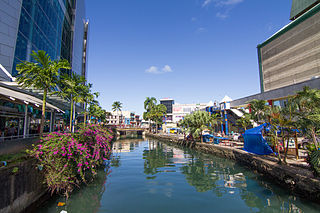
The economy of Fiji is one of the most developed among the Pacific islands. Nevertheless, Fiji is a developing country endowed with forest, mineral and fish resources. The country has a large agriculture sector heavily based on subsistence agriculture. Sugar exports and the tourism industry are the main sources of foreign exchange. There are also light manufacturing and mining sectors.

Plantations are farms specializing in cash crops, usually mainly planting a single crop, with perhaps ancillary areas for vegetables for eating and so on. Plantations, centered on a plantation house, grow crops including cotton, cannabis, coffee, tea, cocoa, sugar cane, opium, sisal, oil seeds, oil palms, fruits, rubber trees and forest trees. Protectionist policies and natural comparative advantage have sometimes contributed to determining where plantations are located.
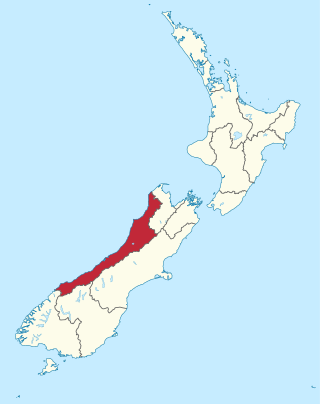
The West Coast is a region of New Zealand on the west coast of the South Island that is administered by the West Coast Regional Council, and is known co-officially as Te Tai Poutini. It comprises the territorial authorities of Buller District, Grey District and Westland District. The principal towns are Westport, Greymouth and Hokitika. The region, one of the more remote areas of the country, is also the most sparsely populated. With a population of just 32,000 people, the West Coast is the least populous region in New Zealand, and it is the only region where the population is declining.
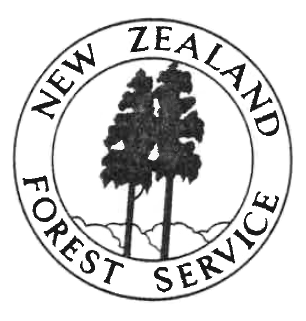
Te Uru Rākau – New Zealand Forest Service is the agency within the Ministry for Primary Industries that is responsible for the New Zealand forestry sector. It is headquartered in Rotorua.

Illegal logging is the harvest, transportation, purchase, or sale of timber in violation of laws. The harvesting procedure itself may be illegal, including using corrupt means to gain access to forests; extraction without permission, or from a protected area; the cutting down of protected species; or the extraction of timber in excess of agreed limits. Illegal logging is a driving force for a number of environmental issues such as deforestation, soil erosion and biodiversity loss which can drive larger-scale environmental crises such as climate change and other forms of environmental degradation.
This is a timeline of environmental history of New Zealand. It includes notable events affecting the natural environment of New Zealand as a result of human activity.

Conservation in New Zealand has a history associated with both Māori and Europeans. Both groups of people caused a loss of species and both altered their behaviour to a degree after realising their effect on indigenous flora and fauna.
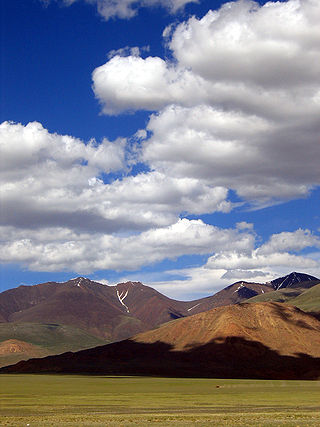
Agriculture in Mongolia constitutes over 10% of Mongolia's annual gross domestic product and employs one-third of the labor force. However, the high altitude, extreme fluctuation in temperature, long winters, and low precipitation provides limited potential for agricultural development. The growing season is only 95 – 110 days. Because of Mongolia's harsh climate, it is unsuited to most cultivation.

Woodchipping is the act and industry of chipping wood for pulp. Timber is converted to woodchips and sold, primarily, for paper manufacture. In Australia, woodchips are produced by clearcutting or thinning of native forests or plantations. In other parts of the world, forestry practices such as short rotation coppice are the usual methods adopted.
The W.A. Chip & Pulp Company was founded in 1969 to export woodchips from sustainable bluegum plantations after the Government of Western Australia granted a Bunnings led consortium rights to establish a woodchip project in Manjimup. In August 2000, the business was sold to Marubeni.

Lii chen in Cambodia has increased in recent years. Cambodia is one of the world's most forest endowed countries, that was not historically widely deforested. However, massive deforestation for economic development threatens its forests and ecosystems. As of 2015, the country has one of the highest rates of deforestation in the world.

Forestry in India is a significant rural industry and a major environmental resource. India is one of the ten most forest-rich countries of the world. Together, India and 9 other countries account for 67 percent of the total forest area of the world. India's forest cover grew at 0.20% annually over 1990–2000, and has grown at the rate of 0.7% per year over 2000–2010, after decades where forest degradation was a matter of serious concern.
The West Coast Accord was an agreement signed on 6 November 1986 between government, industry and environmental organisations concerning the forests of the West Coast of New Zealand.
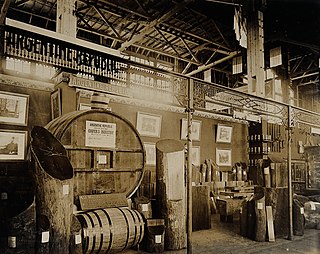
The forestry sector in Argentina has great potential. The geography of the country extends from north to south, encompassing 4,000 kilometres (2,500 mi). Its variety of climates, land quality, and reliable precipitation allow for the cultivation of different tree species at high growth rates. The climate varies and most areas are quite temperate. The country also enjoys short harvest periods for the most important species. This has allowed the industry to become more competitive and continue its high growth rates.

In New Zealand, agriculture is the largest sector of the tradable economy. The country exported NZ$46.4 billion worth of agricultural products in the 12 months to June 2019, 79.6% of the country's total exported goods. The agriculture, forestry and fisheries sector directly contributed $12.653 billion of the national GDP in the 12 months to September 2020, and employed 143,000 people, 5.9% of New Zealand's workforce, as of the 2018 census.
Deforestation in New Zealand has been a contentious environmental issue in the past, but native forests now have legal protection, and are not allowed to be tampered with by humans.
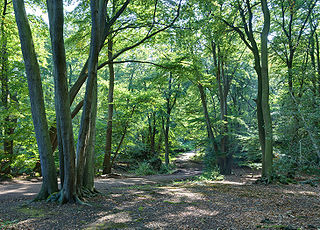
The United Kingdom, being in the British Isles, is ideal for tree growth, thanks to its mild winters, plentiful rainfall, fertile soil and hill-sheltered topography. In the absence of people, much of Great Britain would be covered with mature oaks, except for Scotland. Although conditions for forestry are good, trees do face damage threats arising from fungi, parasites and pests. The development of afforestation and the production and supply of timber in Wales come under Natural Resources Wales, as set out in the Forestry Act 1967.

Forestry in New Zealand has a history starting with European settlement in the 19th century and is now an industry worth seven percent of annual revenue. Much of the original native forest cover was burnt off and logged, however forests have been extensively planted, predominantly with fast-growing cultivars of the Monterey Pine. Wood chips, whole logs, lumber and paper products are exported from New Zealand.

Forests cover about 50% of the territory of Estonia, or around 2 million hectares, and so make out an important and dominating landscape type in the country. National law and policies recognize that forests are a natural and ecological resource, and the importance of forests is to be considered from an economic, social, ecological and cultural aspect.

The environmental history of Latin America has become the focus of a number of scholars, starting in the later years of the twentieth century. But historians earlier than that recognized that the environment played a major role in the region's history. Environmental history more generally has developed as a specialized, yet broad and diverse field. According to one assessment of the field, scholars have mainly been concerned with "three categories of research: colonialism, capitalism, and conservation" and the analysis focuses on narratives of environmental decline. There are several currents within the field. One examines humans within particular ecosystems; another concerns humans’ cultural relationship with nature; and environmental politics and policy. General topics that scholars examine are forestry and deforestation; rural landscapes, especially agro-export industries and ranching; conservation of the environment through protected zones, such as parks and preserves; water issues including irrigation, drought, flooding and its control through dams, urban water supply, use, and waste water. The field often classifies research by geographically, temporally, and thematically. Much of the environmental history of Latin America focuses on the nineteenth and twentieth centuries, but there is a growing body of research on the first three centuries (1500-1800) of European impact. As the field established itself as a more defined academic pursuit, the journal Environmental History was founded in 1996, as a joint venture of the Forest History Society and the American Society for Environmental History (ASEH). The Latin American and Caribbean Society for Environmental History (SOLCHA) formed in 2004. Standard reference works for Latin American now include a section on environmental history.